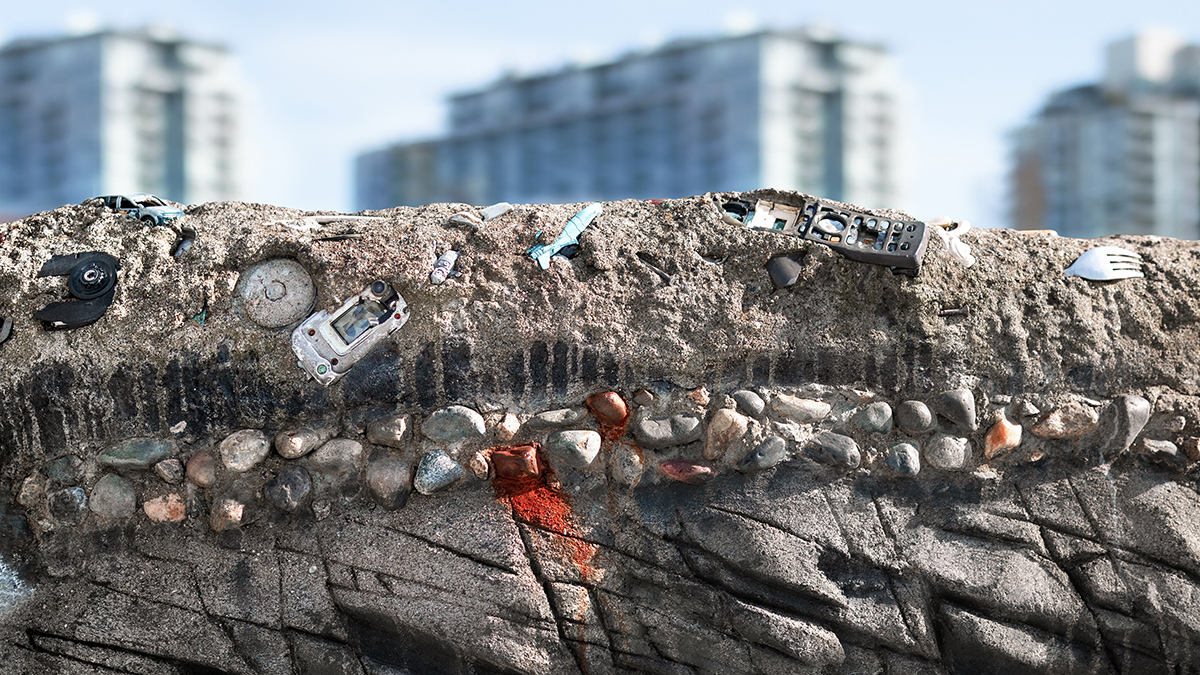In late March, the International Union of Geological Sciences (IUGS) issued a statement: The voting process that had rejected identifying the Anthropocene as a formal geological epoch a few weeks earlier was settled, and the downvote was valid. The statement came after a heated discussion about the vote’s validity and whether the Subcommission on Quaternary Stratigraphy (SQS) had followed the statutes of the International Commission on Stratigraphy (ICS).
Despite IUGS’s formal acknowledgment of the vote, “some uncomfortable facts will not go away,” said SQS’s second vice-chair Martin Head, a palynologist and stratigrapher at Brock University in Ontario, Canada. Head suggested there were breaches in the decisionmaking process. “The Anthropocene Working Group was not allowed to revise its proposal after discussions within SQS had been brought to a halt, even though this is customary. This meant that important results that had recently become available were excluded from consideration,” he explained. “Even worse,” Head continued, “there were several statutory violations that call the validity of the vote into question.”
Last year, the Anthropocene Working Group (AWG) proposed that the IUGS designate a new geological epoch, the Anthropocene, as having started in the mid-20th century. Radionuclides such as plutonium (emitted by nuclear tests) were put forth as physical markers of the new epoch. The team chose Crawford Lake in southern Canada as the reference site for the globally synchronous event that would mark the end of the Holocene.
“It might be too early to define the Anthropocene as a new epoch, but it’s also too early to end the debate.”
To Philip Gibbard, an SQS voting member and Quaternary geologist at the University of Cambridge in the United Kingdom, even if the subcommission approved the proposal, the ICS probably would not let it move forward. “The ‘epoch-division’ is too large scale when compared to other epochs such as Oligocene or Miocene—which are characterized by a whole series of elements” as opposed to the single set of radionuclide markers, he said.
For Fernanda Quaglio, a paleontologist at the Federal University of São Paulo in Brazil, “the marker is not the issue.” To her, markers of the Anthropocene could be plastics or other proxies.
“The point,” she explained, “is the temporal scale. Eighty years is a drop in the ocean in geological terms.”
“But,” she continued, “that does not invalidate the discussion at all.” Quaglio is worried that the downvote may have put a premature end to discussion of the Anthropocene. “It might be too early to define the Anthropocene as a new epoch, but it’s also too early to end the debate.…We have to keep the conversation going,” she said.
“Geologists don’t deal with the future, just the past.”
Renato de Almeida, a sedimentary geologist at the University of São Paulo, has a similar point of view. “The issue is what the marker is signaling. Is it the beginning of a new epoch? We are at the margin of error of that limit,” he said. Epochs are large geological intervals marked by patterns associated with events such as extinctions, he explained, and “the Holocene clearly hasn’t ended, as its fauna and flora are still here.”
“Everything we say about the human impact over the planet is true,” Almeida stressed. “The problem is calling it an epoch.”
To Almeida, the problem in defining an epoch stems mainly from the fact that geologists cannot know for certain what planetary changes will come after the new epoch is defined. All the epochal language of current geology is made in retrospect. “Geologists don’t deal with the future,” Gibbard said, “just the past.”
Event or Epoch
Gibbard and a group of colleagues defend the Anthropocene not as an epoch, but as a geological “event,” a term that includes occurrences such as the Great Ordovician Biodiversification Event, which took place more than 400 million years ago. During this pivotal time in Earth’s history, changes in tectonic activity and an uptick in marine oxygen are thought to have contributed to a radical increase in marine biodiversity—but it is not an epoch.
To Head, however, “the Anthropocene is not an event…and it’s not strictly geological, as it combines social criteria. It is in fact interdisciplinary, local to regional in scale, and always subject to reinterpretation.” The most substantial signals of the Anthropocene, he said, include a significant increase in human population, energy consumption, and greenhouse gas emissions.
“The term is larger than stratigraphy, and it gave the discipline a visibility it never had before.”
To Simon Turner, a geographer at University College London and AWG secretary, conditions now are “very much post-Holocene.” He said the recent downvote “makes Quaternary geology look further out of sync with other sciences concerned with climate change and other destructive impacts of recent human activity to our planet.”
Ultimately, according to Almeida, it doesn’t matter whether the Anthropocene is an event or epoch. “The term is larger than stratigraphy, and it gave the discipline a visibility it never had before,” he said. “Nomenclature doesn’t change its importance.…People in geology and other disciplines will keep on using” the term, he said.
Almeida pointed out that something very similar happened when stratigraphers grappled with Quaternary nomenclature. “It was only officially approved as a period in 2009, but people were already using the term in that way decades before it happened. The ICS sort of adjusted to a change that had happened already,” he said.
—Meghie Rodrigues (@meghier), Science Writer

